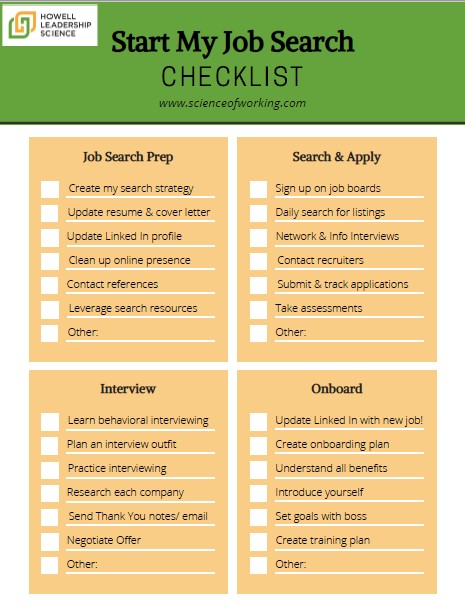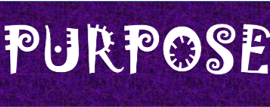
As part of job search prep, you need to create a job search strategy. That’s a fancy way of saying that you need to decide what type of job you want.
If you don’t set a clean target, your search will meander and feel overwhelming. It will likely fail, because you’ll waste time by applying to jobs that don’t meet your needs.
A job search strategy gives you focus and direction and cuts out noise, so you can find a job faster.
Consider your career path
Before you jump into a job search, slow down and take the opportunity to think about your career. Transitions provide a nudge to evaluate current reality and dream a bit about your next step.
Check out How to Take Control of Your Career During a Pandemic for some thoughts about evaluating your career, investigating other industries, and mapping your skills to new roles.
Some career path questions to consider:
- What do you like and dislike about your current career?
- What do you like and dislike about your current industry?
- Can you use your skillset in other types of jobs?
- Would you like to make a radical career pivot?
- Do you want a job at the same level, a promotion or one with less responsibility?
Keep your job search strategy simple
Once you settle your big-picture career questions, you can create a simple job search strategy.
Don’t overthink it – spend 10 minutes and create your strategy. Take the step to actually write it down – this forces you to clarify your thoughts and allows you to re-read it if your search gets complicated.
Your search strategy has two parts: define the job you want and structure your search.
Job Search Strategy Part 1: Define the job you want
Answer these questions to define the job you want.
Questions about the organization

- What type of organization do you want to work for? Options include: corporate, non-profit, education, healthcare, government, start-up, public or private, consulting
- What workplace elements are important to you? Considerations include: company culture, managerial style, type of hierarchy and rules, advancement opportunities
- Where is the organization located?
- What type of setting do you want? Options include: on site, remote/ virtual, mix of both
Questions about the role and benefits
- What time commitment do you want? Options include: full-time, part-time, freelance, on-call
- Do you need benefits? Consider the mix of benefits: healthcare, dental, retirement, vacation, tuition reimbursement
- What is your target salary? Components that can make up your salary: base pay, commission, annual bonus, signing bonus, stock options, restricted stock
- What is your preferred schedule? Options include: 8 to 5 Monday to Friday, nights, weekends and holidays, variable due to international time zones, mix
Questions about personal situation
- What are your personal constraints? Considerations include: childcare or eldercare responsibilities, transportation to job sites, length of commute, personal wellness, etc.
- Are you willing to relocate and to where?
- Are you willing to travel? If so, how much and where?
Job Search Strategy Part 2: Structure your search
Once you know what type of job you want, you need to plan your time to efficiently find that job.
Some ways to structure your search include:

- Download and use the Start My Job Search Checklist to keep yourself on track
- Set weekly goals for yourself to monitor progress and keep yourself accountable. Your goals could include: updating your resume and cover letter, the number of applications to submit, the number of networking contacts to make, amount of activity on Linked In, the number of screening call and interviews
- Dedicate specific time every day for your search.
- Organize your computer and a workspace.
- Keep records of networking conversations and job applications. For example, when you submit and application keep a record in Excel or in an app like Trello or One Note. Record the company name, the job title, the date your submitted the application, the username and password for the applicant tracking system and keep a copy of the job description. This information will come in handy if you need to check the status of an application or to prepare for an interview.
- Tell everyone you meet that you are searching for a job. Even people outside your professional circle might have connections to people with job openings – that’s how networking works.
Example of a job search strategy
Below is an example of a job search strategy for a hypothetical accountant. Note that it is simple and personalized.

I am looking for a full-time position with benefits in a large, public company.
I would like to get a higher level role than my last one and receive a 10% salary increase.
However, I am willing to take a job at my current level to get started with a new company.
I need to stay in this city, because my family is settled here. I can travel 20% of the time if needed – only within the US, no international travel.
I’d like to have an option to work from home a few days a week. I need to have a job that allows me to leave the office by 6 pm in order to pick the kids up from daycare.
The company should be committed to developing people and paying for professional development, so I have financial and time support in getting my CPA.
I’ll follow the Start My Job Search Checklist to make sure I cover everything in this search. I’ll spend 3 hours a day from 9am-11 am and 1-2 pm working on the job search and be available for calls at other times.
My goal is to apply for at least 20 jobs every week and contact five people from my Linked In network every day. I’ll start networking by contacting my previous colleagues and classmates from my university.
Check out the entire Start My Job Search series
For an overview of job searching in 2021, read my article on HBR: 5 Tips to Help You Get Hired Right Now
For tactical tips, read the following articles:
- Checklist for a Successful Job Search
- How to Prep for your Job Search
- Important Strategy Questions for Starting a Job Search
- How to Search and Apply for Jobs
- How to Ace an Interview
- How to Strategically Start a New Job
A version of this article originally appeared on startmyjobsearch.com which is no longer active.



